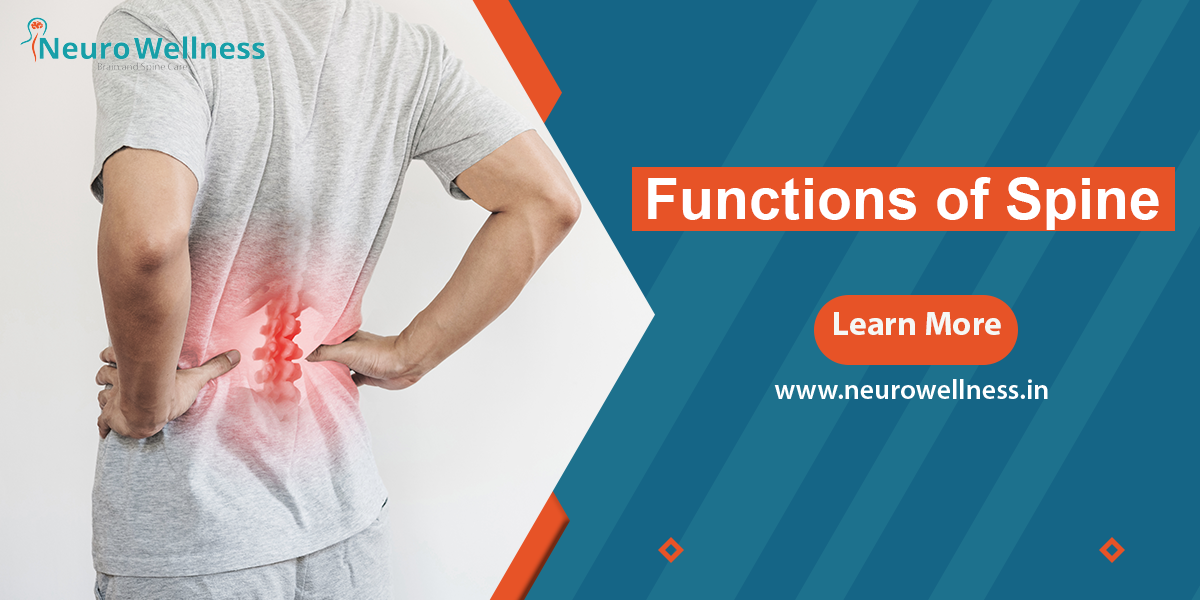What is one of the most crucial supporting component of your body? Yes It is your spine. You can’t stay upright or even stand up without it isn’t it? It provides structure and support to your body. It enables you to move freely and bend with flexibility. Nature is also created to protect the spinal cord. The spinal cord is a network of nerves that connects your brain to the rest of your body which allows you to regulate your movements. You can’t move any part of your body and your organs can’t work if you don’t have a spinal cord. This is why, if you want to live an active life, you must maintain the health of your spine correct
This blog covers the key functions of a spine or spinal cord.
What is the Spine?
Here we are going to discuss what exactly it made, its units and attachments?
The spine (also known as the backbone) is a connected column of bones that runs from the head to the lower back. The column is made up of bone parts. A vertebra is a single bone segment or unit, while vertebrae are several bone segments. Ligaments and muscles connect these vertebrae, while a disc separates the majority of them and acts as a cushion to absorb shock along the spine.
Each vertebra is numbered and classified into five regions.
- The cervical area has 7 cervical vertebrae.
- The thoracic area contains 12 thoracic vertebrae.
- The lumbar area contains 5 lumbar vertebrae.
- In the sacral area, there are 5 sacral vertebrae that are fused together to form one bone known as the sacrum.
- In the coccygeal area, there are 3 to 5 coccygeal vertebrae that are joined as one bone and known as the coccyx (often known as the tailbone).
What does a spinal cord do?
The central nervous system of your body is composed of the brain and spinal cord. The brain serves as your body’s command centre, and the spinal cord serves as a conduit for messages conveyed from the brain to the body and from the body to the brain.
The peripheral nervous system is a network of nerve strands that branch off from the left and right sides of the spinal cord through gaps in the spinal canal between each vertebra. What these pairs of nerves do ? These nerve pairs are distributed throughout your body and carry commands from your brain and spinal cord to and from various sections of your body.
The central nervous system and peripheral nervous system collaborate to allow your brain to regulate your body’s numerous functions, which include three critical areas:
Motor Functions – directs the voluntary muscle movements of your body.
Sensory Functions – monitors touch, pressure, temperature, and pain sensations.
Autonomic Functions – governs digestion, urination, body temperature, heart rate, and blood vessel dilation/contraction (blood pressure).
What are the Functions of spine?
- Protection
The spinal column is like a guard -helmet . What it does is- protects the spinal cord and nerve roots. Any injury here can jeopardise your general health if messages are not successfully delivered to and from the brain.
- Mobility and Flexibility
Our spine determines our range of motion, providing Flexion (forward bending), Extension (backward bending), Side bending (left and right), and Rotation (left and right). It also provides a range of the aforementioned combinations, allowing us to accomplish movements . Eg. how we dance ? How we flex our body ? How we climb and climb down? Including rolling over in bed to getting out of bed in the morning, walking through the stairs, and sprinting for the bus to prevent being late.
- Support for the structure- like a pillar!
We couldn’t sit up, stand, walk, or run without our spine, which provides structural support for the head, shoulders, and chest. It also connects the upper and lower bodies, with the spinal column encasing the vital cord and nerve roots.
The spinal column not only connects the upper and lower bodies, but it also helps to balance the body and distribute weight.
- Attachment base
Spine is like a connecting device -Ligaments, tendons, and muscles all connect and attach to the spinal column. Imagine If this did not exist, there would be no anchor.
- Carrying brain signals
The spinal cord receives brain impulses that govern movement and autonomic activities.
- Carrying information to the brain
The spinal cord and nerves carry messages from the body to the brain, such as touch, pressure, and pain sensations. When these messages are carried to Brain only we will can feel all sensations.
- Reflex responses
The spinal cord can conduct motor reflexes independently of the brain. The patellar reflex, for example, causes a person’s knee to jerk involuntarily when touched in a certain area.
Summary:
The spinal cord is a complicated network of nerve cells that control movement and feeling. It passes information from the brain to the rest of the body.
Neuro Wellness is a Bangalore Spine Specialist Clinic which provides the best care for problems related to spine and brain. If you are facing any such problem, do visit today for a healthy tomorrow!

